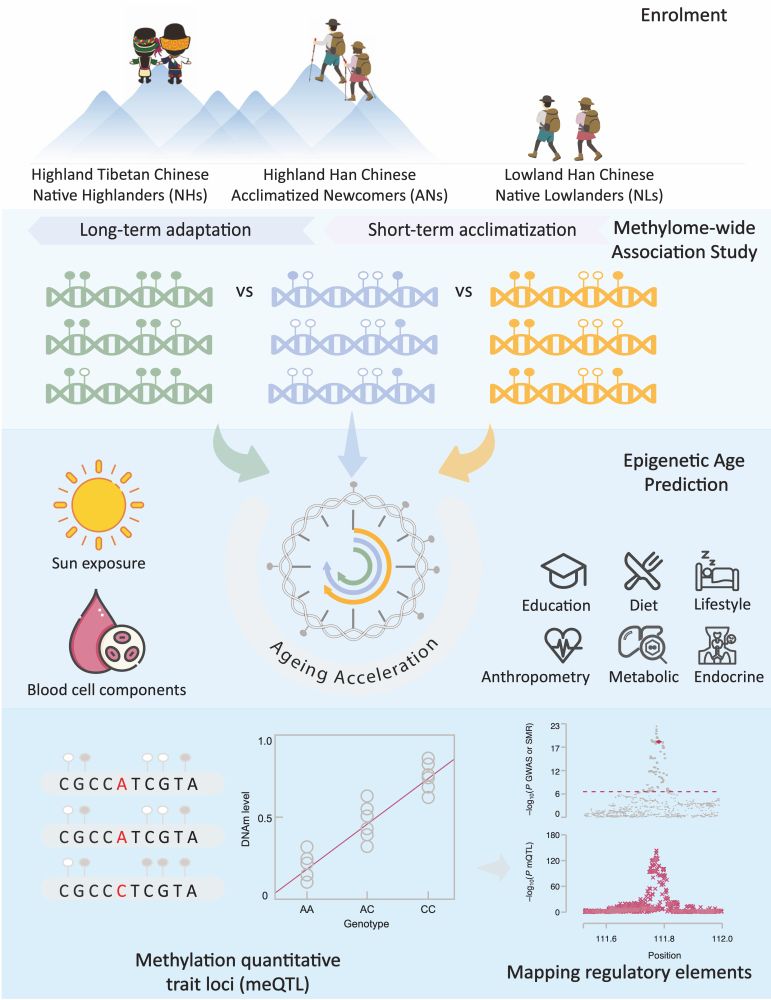Kavita Babu
@kavita-babu.bsky.social
510 followers
570 following
16 posts
C. elegans Neurobiologist | Assoc Prof at IISc Bangalore, India. Personal views
Posts
Media
Videos
Starter Packs
Pinned
Kavita Babu
@kavita-babu.bsky.social
· Feb 27
Kavita Babu
@kavita-babu.bsky.social
· Aug 23
Kavita Babu
@kavita-babu.bsky.social
· Aug 23

The claudin-like molecule CLC-3 regulates neuromuscular function in Caenorhabditis elegans by modulating cholinergic signalling
Cell adhesion molecules (CAMs play important roles in neurons, contributing to nervous system development, synapse formation, and activity-dependent plasticity. Claudins, the cell-adhesion molecules k...
www.biorxiv.org
Kavita Babu
@kavita-babu.bsky.social
· Aug 21
Kavita Babu
@kavita-babu.bsky.social
· Aug 21
Reposted by Kavita Babu
Kavita Babu
@kavita-babu.bsky.social
· Aug 21
Reposted by Kavita Babu
Reposted by Kavita Babu
Reposted by Kavita Babu
Kavita Babu
@kavita-babu.bsky.social
· Jul 7
Neuromodulation of Swarming Behavior in C. elegans: Insights into the Conserved role of Calsyntenins
Collective animal behaviors arise from a complex interplay between internal physiological states and external environmental cues. In Caenorhabditis elegans, favorable conditions promote dispersal, while stressors like food scarcity or overcrowding trigger aggregation. Here, we describe a distinct behavior termed as swarming, where C. elegans move and feed in aggregates despite abundant food availability. While environmental factors have been implicated in this behavior, the underlying genetic and molecular mechanisms remain unclear. We identify a novel role for the conserved calsyntenin protein CASY-1 in regulating swarming. Through genetic, behavioral, and optogenetic approaches, we show that CASY-1 functions in sensory neurons to modulate the neuropeptide pigment-dispersing factor (PDF) signaling. Mutants in casy-1 show impaired PDF-1 signaling and reduced inhibition of the serotonin pathway, a known regulator of social behaviors. This dysregulation, along with its associated mechanosensory and foraging defects, likely contributes to the swarming phenotype. Our findings reveal a putative neuromodulatory pathway critical for swarming behavior in C. elegans. ### Competing Interest Statement The authors have declared no competing interest. Wellcome Trust/DBT India Alliance, https://ror.org/04reqzt68, IA/S/19/2/504649 ANRF-POWER
www.biorxiv.org
Reposted by Kavita Babu
Kavita Babu
@kavita-babu.bsky.social
· May 14

FLP-15 modulates the amplitude of body bends during locomotion in Caenorhabditis elegans
Locomotion is essential for executing most behaviours. In Caenorhabditis elegans. Efficient locomotion is exhibited as a result of the coordination of excitatory and inhibitory signals from the nervou...
www.biorxiv.org
Reposted by Kavita Babu
Kavita Babu
@kavita-babu.bsky.social
· May 10
Kavita Babu
@kavita-babu.bsky.social
· May 10

FLP-15 functions through the GPCR NPR-3 to regulate local and global search behaviours in Caenorhabditis elegans
Foraging is essential for sustenance and well-being of all organisms. The transition from well-fed to food-deprived conditions in C. elegans triggers a localized exploration of the environment charact...
www.biorxiv.org
Reposted by Kavita Babu
Reposted by Kavita Babu
Reposted by Kavita Babu
Javier Apfeld
@javierapfeld.bsky.social
· Apr 29
Postdoctoral Research Associate, Biology
About the Opportunity Job Summary The Apfeld Lab at Northeastern University is seeking a postdoctoral researcher to investigate how genes work together to determine the maximum lifespan of the nematod...
northeastern.wd1.myworkdayjobs.com
Reposted by Kavita Babu
Reposted by Kavita Babu
Kavita Babu
@kavita-babu.bsky.social
· Mar 14










